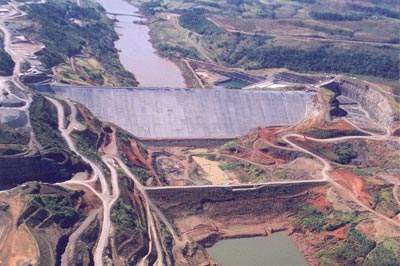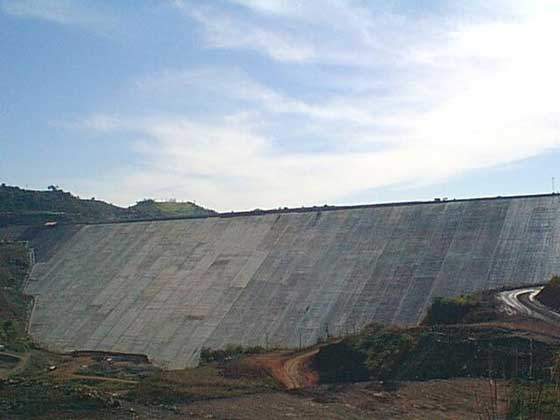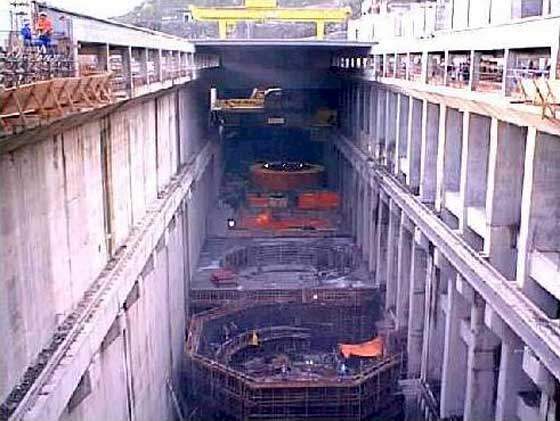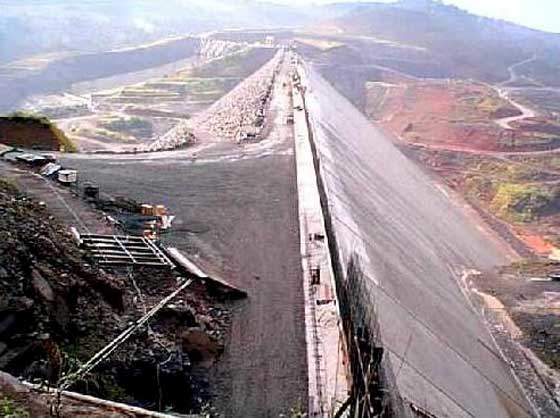The 1,450MW Itá hydroelectric project was at the time of construction the largest public works project in Brazil. It was the largest of several initiatives to meet the country’s increased power requirements, and helped to make hydro power an estimated 93% of Brazil’s energy production.
The plant is located on the river Uruguay, 550km from Florianópolis, and lies between the states of Rio Grande do Sul and Santa Catarina. It generates energy the equivalent of 60% of the annual consumption of the entire state of Santa Catarina. The power plant is located further downstream of the Machadinho dam.
HIGH ELECTRICITY GROWTH IN REGION
Electrosul is Electrobrás’s subsidiary serving south east Brazil. This is an industrialised region with a high record of growth in electricity consumption. The company began the Itá dam as an in-house project in 1980, but suspended the works for financial reasons in 1987. In August 1995, it formed a consortium with several Brazilian groups to complete construction. The 1999 currency devaluation again caused serious financial worries, but that time the economy recovered far more quickly.
The private groups took stakes in the project through joint-venture company Associação Autprodtores Independentes (AAI). AAI supplied equipment and services for Itá as well as finance. Tractebel, the energy division of SUEZ, now owns the project, along with similar projects in Machadinho and Cana Brava.
In July 2000, Brazil started taking delivery of power from Argentina across a new transmission link between the two countries (the second). Electrobrás has a contract for 1,000MW of power with Central Constanera, the Argentine generator. Annual power purchases from Argentina are estimated to be about $230 million, with the supply increasing to above 3,000MW until 2020.
The transmission line and conversion station was built for around $380 million by a consortium led by ABB. It runs from Rincon de Santa Maria (Argentina) to the Itá complex. Another $380 million transmission system was later completed to connect Itá with the Argentine-Paraguayan Yacyreta hydroelectric plant. Another is under consideration.
PLANT MAKE-UP
The order for the five 290MW turbines for Itá went to Voith, a perennial winner in the Brazilian market, in partnership with GEC Alsthom’s Mecanica Pesada. Ansaldo and ABB supplied generators. ABB Alstom has recently invested in the modernisation and expansion of its heavy machinery factory in Taubate, on the outskirts of Sao Paulo, as a result of this business and of other orders from the Brazilian power market.
The concrete-face rockfill dam is 880m long and 125m high. Companhia Brasileira do Projectos e Obras (CBPO) won the lead construction contract. Other parties included Engevix for planning, Tenenge for erection and Bardella for hydromechanical equipment. Both CBPO and Tenenge are part of the Odebrecht group, one of the shareholders in the AAI joint-venture, which is sponsoring the project.
PROJECT FINANCE
Total investment was an estimated $1.4 billion. AAI invested $700 million and in return receive 51% of the electricity generated for their plant operations. They operate the plant under a thirty-year concession. Electrosul distributes the other 49% of power to its clients in the southern states of Brazil. Since construction was completed in 2000, the Itá dam has been producing 1,450MW for local requirements.
AAI’s shareholders are steel group Companhia Siderúrgica Nacional, the Odebrecht group petrochemical companies Poliolefinas-PSA and OPP Petroquímica, and cement manufacturer Companhia de Cimento Itambé. National development bank BNDES and the Inter-American Development Bank (IADB) also provided finance. The Odebrecht group clearly won in terms of shares of Itá business. It is both an investor and, through CBPO and Tenenge, a supplier.
Most of the 6,000 inhabitants of the small town of Itá, Santa Catarina were relocated to a new town 150m above the new dam. Another 200 or so inhabitants of the area also later appealed to the government for relocation.







